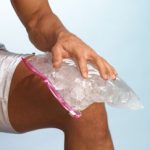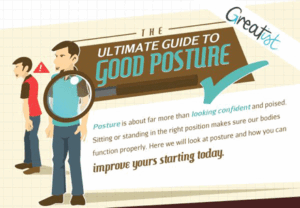Please Hold the R.I.C.E.
Please Hold the R.I.C.E.
I have been in the rehabilitation field since 1992. Since the very beginning I was always told that when treating an acute injury you should follow the age old acronym of R.I.C.E. or Rest, Ice, Compression and Elevation. The concept was originally introduced by one of the most respected names in rehabilitation, Dr. Gabe Mirkin back in 1978. Recent research has determined now that perhaps that this is not the way to go. Dr. Mirkin himself wrote an article recently concurring with the latest research.
I have always been one to promote the use of ice for both acute and chronic injuries. I certainly was led to believe that this was the appropriate means of treatment based upon past research, but I also believed that it was effective because of both personal and clinical results that I have experienced over my many years.
The research has now shown that the effects of ice on an acute injury may actually impede the healing process therefore negatively impacting recovery. When the tissue is damaged through trauma or develops muscle soreness from intense exercise, your immune system begins a the process of inflammation. This process is the same as when you need your immune system to fend of germs except different types of cells are produced. Inflammatory cells are produced by the immune system to begin the process of healing. The inflammatory cells called macrophages release a hormone called Insulin-like growth Factor (IGF-1) into the damaged tissues, which helps muscles and other injured parts to heal. However, applying ice to reduce swelling actually delays healing by preventing the body from releasing IGF-1.
Ice has been shown to constrict the blood vessels near the injury and shut off the blood flow that brings in the healing cells of inflammation.
I have always been leery of the use of NSAID’s (Non-Steroidal Anti-Inflammatory Drugs) when treating muscle injuries for the same reason as stated above. We NEED the inflammatory process to take place in order for the healing to continue. With the research showing now that icing is not recommended either, where does that leave us?
Well, if there is one thing you can learn from this is that the research then and now is always under scrutiny and changes all the time. Experience is the ultimate equalizer when it comes to right and wrong. I have seen tremendous success with icing over the years and intend to still make recommendation to ice when appropriate. I have never considered ice to be the key factor to tissue repair as much as I believe in rest, movement, massage and appropriate exercise. Since applying ice to an injury has been shown to reduce pain, it is still acceptable to cool an injured body part for short periods soon after the injury occurs. You could apply the ice for up to 10 minutes, remove it for 20 minutes, and repeat the 10-minute application once or twice. So instead of popping the NSAID’s that we know will only prevent what the body is trying to do naturally, we should still ice for the pain when needed, taking extra precaution to rest the injured area.
Ready to #feelbetter?
You're just a click away from a wicked good massage!
-

60 Minute Massage Gift Card
$170.00 Add to cart -

90 Minute Massage Gift Card
$255.00 Add to cart -

Mini Aer Small Room Air Purifier
$149.00 Add to cart -
Sale!

Thera-Pearl Sports Pack/Hot Cold
Original price was: $14.99.$12.99Current price is: $12.99. Add to cart -

3 Somadome Sessions Gift Card
$135.00 Add to cart -

TheraBand CLX Connective Loop
$14.99 Select options -

6 Somadome Sessions Gift Card
$270.00 Add to cart -
Sale!

Biofreeze
Original price was: $14.99.$12.99Current price is: $12.99. Add to cart
Passion Mountain
I was at an event recently and was asked by somebody how I could STILL be so passionate for what I do. He said, “What I mean is that you talk about what you do with the passion of child flipping through a new pack of baseball cards. I wish I was that passionate about…
Read MoreFish You Should Scale Back On
New Englander’s love their seafood and we deepen our love affair every summer when our favorite crustaceans, ‘lobstah’ is a plentiful. But what is the best seafood for us and what are the ones that we should be staying away from regardless of how yummy they may be? Monterey Bay Aquarium has combined data from…
Read MoreSports are a Great Metaphor
It’s no secret that my life has always revolved around athletics. From my early days playing pop warner football, through my college years of lacrosse and on into the various community leagues since, being part of a team has always been where I feel most comfortable. What I enjoy most about being part of a…
Read MoreWhat is an Expert?
“An expert is someone widely recognized as a reliable source of technique or skill whose faculty for judging or deciding rightly, justly, or wisely is accorded authority and status by their peers or the public in a specific well-distinguished domain.” – Wikipedia This past month I flew to Atlanta to present a few classes in…
Read MoreThe Power of a Hug
Originally Posted 5/1/2014; following the 1 year anniversary of the Boston Marathon Bombings and our mission to rebound after these horrible attacks on our city. We helped orchestrate the ‘One Run for Boston’; a 3328.2 NON-STOP running relay from LA to Boston, raising over $500K for the victims and survivors of the events of 4/20/2013.…
Read MoreTips from the Table
Without fail, every marathon season, I am asked by my patients, what kind of advice I would offer up to them as they prepare to run the Boston marathon. I first admit that I have never (nor will ever) run a marathon, but given my unique insight of spending 1000’s of hours alone in a…
Read MoreShoulder Impingement
The glenohumeral joint is a highly complex articulation. It has the greatest range of motion of any joint in the body. However, its increased motion occurs at the expense of stability, requiring the soft tissues to play a more critical role in maintaining joint integrity. As a result of increased mechanical demands, numerous soft-tissue injuries…
Read MoreTrain, train, train. Train of fools.
In my seventeen years as a massage therapist, I am still amazed by some of the things I see in my office. Being situated 1/10th of a mile from the finish line of one of the most prestigious marathons in the world, the Boston Marathon, we see more than our fair share of runners coming…
Read MoreAchilles Tendon Disorder
Achilles Tendon Disorder Massage therapists see many clients with active lifestyles. Running, jumping, dancing, climbing, or any number of other activities can put serious stress on the Achilles tendon (AT). AT disorders also can contribute to biomechanical disorders in the foot and lower extremity. That is why it is important for the massage practitioner to…
Read More



